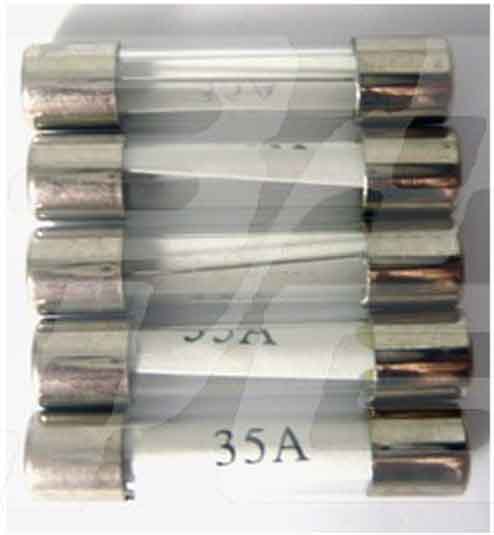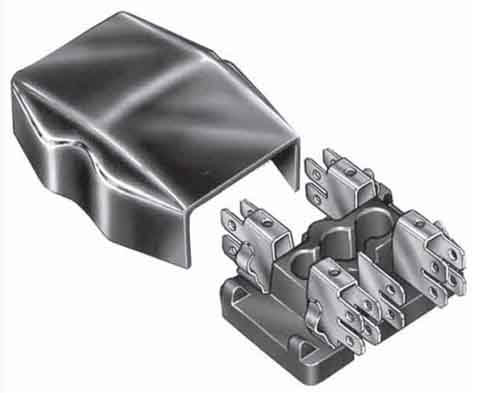
The 4-fuse fusebox showing the orientation and wire colours from the rear. Make sure the link between terminals 1 and 3 goes at the top front. The 'correct' position for the red/green is shown, but electrically it doesn't matter which of the top two front spades it goes on. Strictly speaking the red wires for the left-hand side of the car go on the top fuse, but electrically it doesn't matter if the left and right sides are reversed. Some white wires changed to white/brown with the introduction of the ignition relay for the 77 model year.
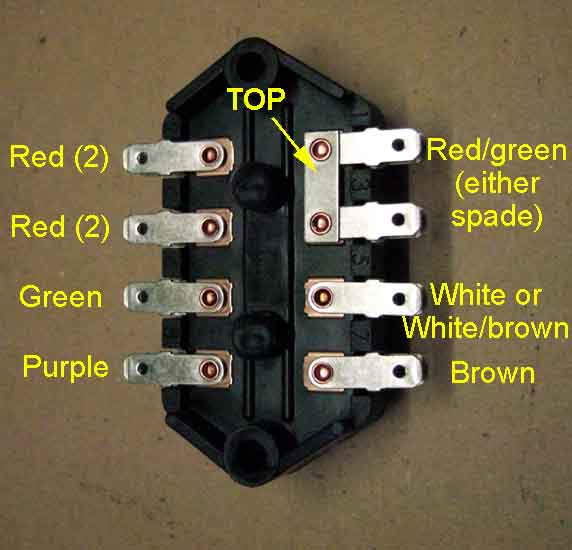
Showing the orientation and wire colours from the front. Terminal numbers are visible when fitted, 1 and 2 (circled) should be at the top.
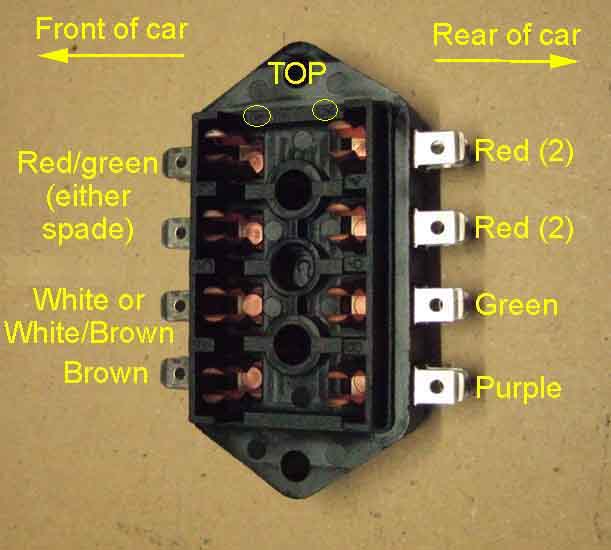
Typical fuse-holder corrosion.
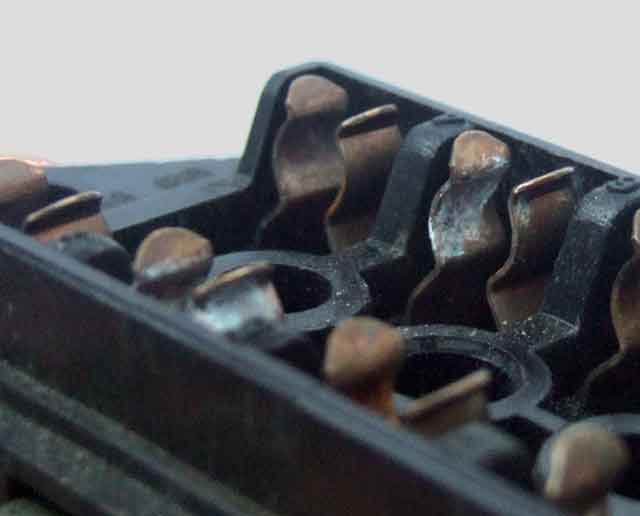
Fusebox cover with spare fuses.
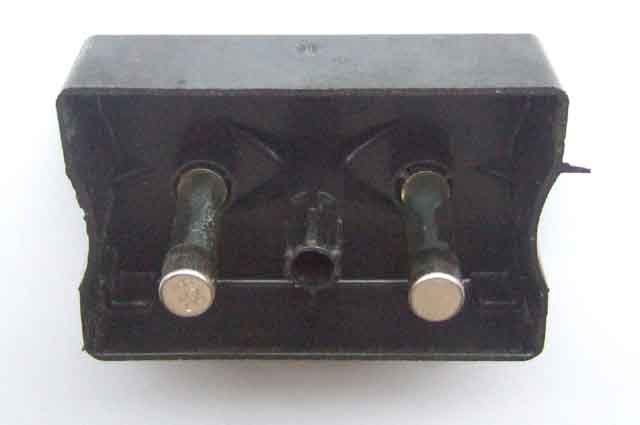
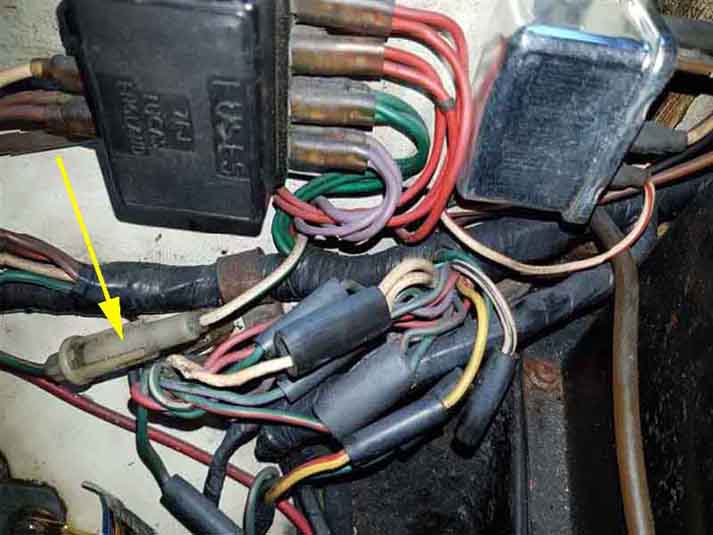
Mk2 North American, all V8s, and rubber bumper cars gained hazard flashers and the fuse for that in RHD cars at least was initially behind the centre console:
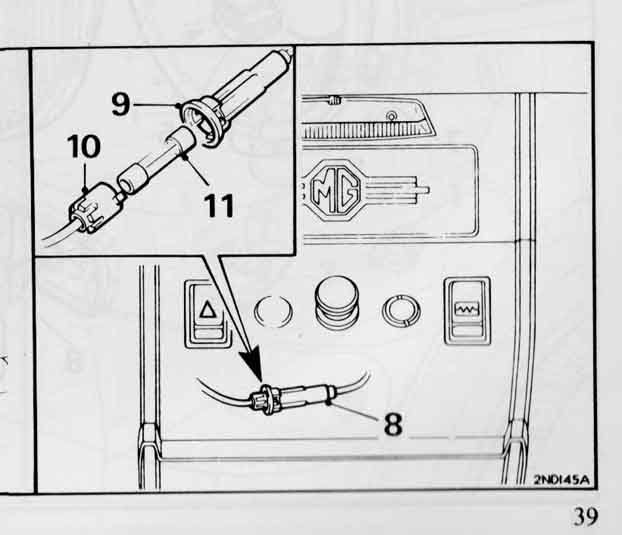
Later hazard fuses ('D' here), and first one (all markets) then two (RHD) additional green circuit fuses when the accessories fuse was deleted. The North American anti-runon valve fuse ('C') also appeared under the fusebox with an automatically resetting thermal circuit breaker ('A') for the cooling fan. 'B' is the North American connector in the brown circuit where two wires came up from the starter solenoid then split into two separate feeds which reduces the volt-drop under heavy load conditions.
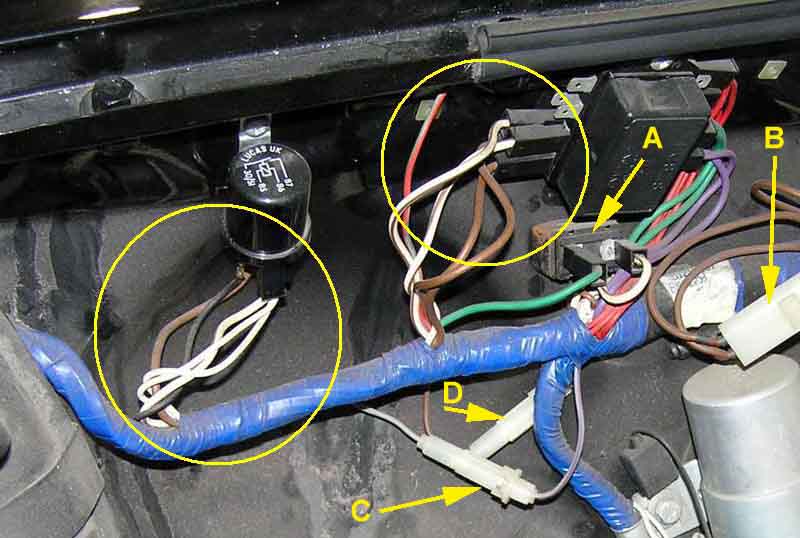
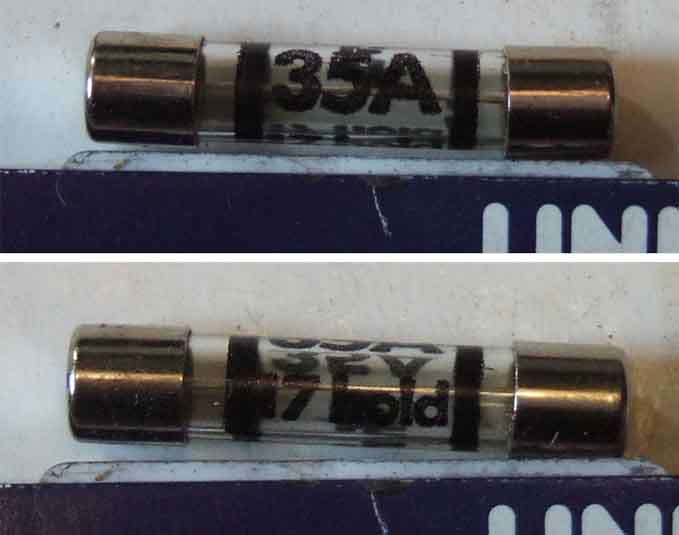
Slip of paper showing '17A continuous' and '35 AMP blow', both unambiguous.
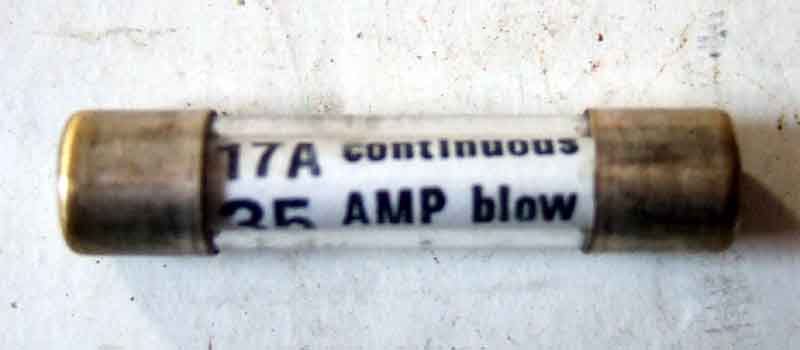
'35A' on an end-cap ...
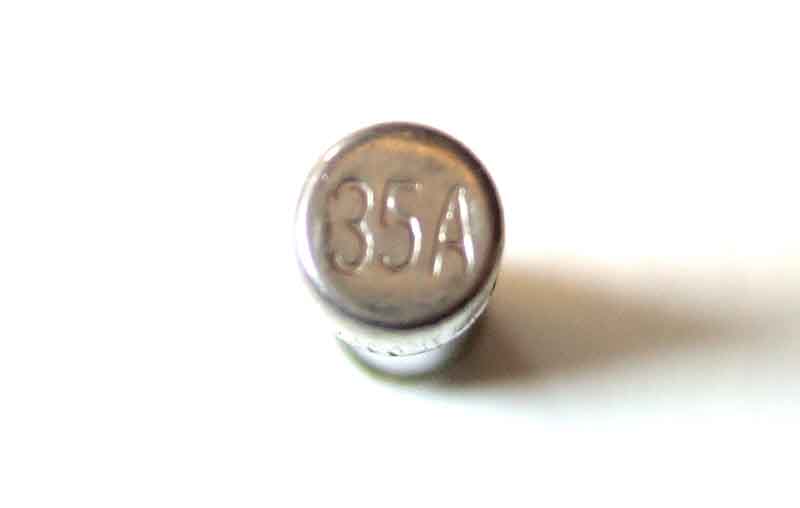
... and the only number on a slip of paper less so.
